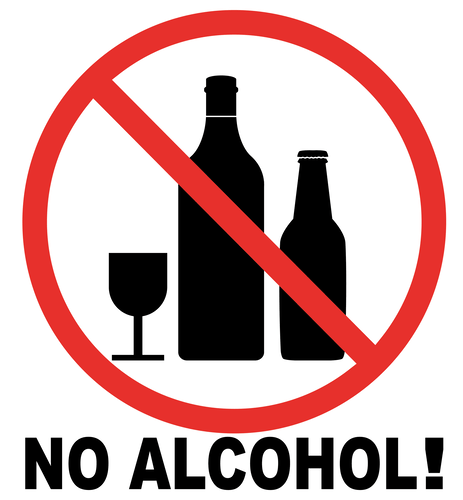Alcohol Use Disorder: Definition, Symptoms, Traits, Causes, Treatment
Content
One drink is defined as 12 ounces or 360 milliliters (mL) of beer (5% alcohol content), 5 ounces or 150 mL of wine (12% alcohol content), or a 1.5-ounce or 45-mL shot of liquor (80 proof, or 40% alcohol content). If someone is struggling with an AUD but isn’t yet ready to seek an alcohol rehabilitation center, it may be time to consider an intervention. Many people drink because they don’t feel adequately connected to others.
However, many people who drink too much find they can’t just cut back. It is a multifaceted and complex disease, so while someone may inherit a predisposition to the disorder, genes do not fully determine a person’s outcome. According to the DSM-5, alcoholism is believed to have a strong heritable component, with between 40–60% of the variance of risk being attributable to genetic factors.2 However, there is no cut-and-dry formula to explain alcoholism. For men, this low-risk range is defined as no more than 4 drinks on a given day and no more than 14 per week. A causal relationship has been established between harmful drinking and incidence or outcomes of infectious diseases such as tuberculosis and HIV. Excessive alcohol use takes a toll on the liver and can lead to fatty liver disease (steatosis), hepatitis, fibrosis, and cirrhosis.
What Increases the Risk for Alcohol Use Disorder?
Their work may decline as well, and they may lose a spiritual or religious practice they once valued. A team of professionals is often needed to treat the alcohol-dependent person. Health care providers have developed a list of symptoms that a person has to have in the past year to be diagnosed with alcohol use disorder. These services are meant to manage withdrawal symptoms, minimize the risk of complications, 5 Tips to Consider When Choosing a Sober Living House as well as to address any medical or psychiatric conditions that may develop. The context of drinking plays an important role in the occurrence of alcohol-related harm, particularly as a result of alcohol intoxication. Alcohol consumption can have an impact not only on the incidence of diseases, injuries and other health conditions, but also on their outcomes and how these evolve over time.

In the general population, variation in daily alcohol consumption is distributed along a smooth continuum. This characteristic is inconsistent with the medical model, which implies that alcoholism is either present or absent—as is the case, for example, with pregnancy or a brain tumour. For such reasons, the sociological definition regards alcoholism as merely one symptom of social deviance and believes its diagnosis often lies in the eyes and value system of the beholder. For example, periodic intoxication can cause sickness necessitating days of absence from work. In a modern industrial community, this makes alcoholism similar to a disease.
What Are The Warning Signs Of Alcoholism?
The US Preventive Services Task Force recommends that health care providers screen all adults for excessive alcohol use and provide brief intervention and referral to treatment as needed. The Guidelines also do not recommend that people who do not drink alcohol start drinking for any reason and that if adults of legal drinking age choose to drink alcoholic beverages, drinking less is better for health than drinking more. Binge drinking and heavy drinking can cause heart disease, including cardiomyopathy (disease of the heart muscle), as well as irregular heartbeat, high blood pressure, and stroke. Other tests can indicate whether there is damage to the liver, or — in males — reduced testosterone levels.
- The most in-depth care allows you to live full time at a treatment facility.
- If you suspect that you or someone you love has an alcohol use disorder, your healthcare provider can conduct a formal assessment of your symptoms.
- Alcohol problems vary in severity from mild to life threatening and affect the individual, the person’s family, and society in numerous adverse ways.
- The less alcohol a person drinks, the lower the risk of these types of cancer.
Heavy drinking can fuel changes in the brain—about half of people who meet the criteria for alcoholism show problems with thinking or memory, research suggests. The ability to plan ahead, learn and hold information (like a phone number or shopping list), withhold responses as needed, and work with spatial information (such as using a map) can be affected. Brain structures can shift as well, particularly in the frontal lobes, which are key for planning, making decisions, and regulating emotions.
Phrases Containing alcoholism
This is available from a range of support groups and professional services. According to the World Health Organization (WHO), globally, 3.3 million deaths every year result from the harmful use of alcohol. In some people, the initial reaction may feel like an increase in energy. But as you continue to drink, you become drowsy and have less control over your actions.
You may hear them called “functional” or “high-functioning” alcoholics. The pathway to healing and recovery is often a process that occurs over many years. Addiction not only involves the individual suffering, but their partner, their family, and their friends as well.
A significant proportion of the disease burden attributable to alcohol consumption arises from unintentional and intentional injuries, including those due to road traffic crashes, violence, and suicide. Fatal alcohol-related injuries tend to occur in relatively younger age groups. Alcohol is a psychoactive substance with dependence-producing properties that has been widely used in many cultures for centuries. The harmful use of alcohol causes a high burden of disease and has significant social and economic consequences.
- The reason may be that alcohol tamps down working memory and therefore sparks people to think outside the box.
- For women, it is four drinks in one sitting and more than eight drinks in one week.
- Research has implicated a gene (D2 dopamine receptor gene) that, when inherited in a specific form, might increase a person’s chance of developing alcoholism.
 447total visits,4visits today
447total visits,4visits today